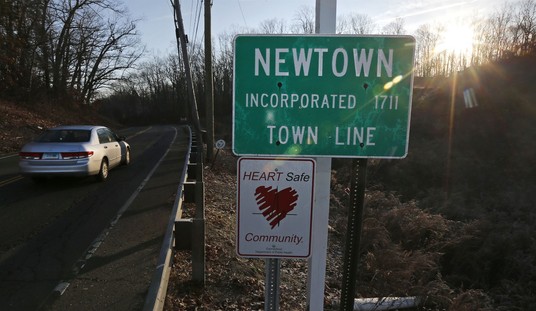I sincerely wish I could just snap my fingers and end mass shootings forever. Unfortunately, I can’t. No one can, and that’s also essentially what the push for gun control is with regard to mass shootings. At best, it’s a wish.
But a school system in Michigan has an interesting–and expensive–plan to address school shootings. They’re redesigning their schools.
Many schools in America, like the one Moreno’s grandson attends, have installed metal detectors and fortified their entrances in response to the threat of school shootings.
But others, like Fruitport High School in Michigan, have opted to completely redesign their buildings’ architecture – spending $48 million to incorporate curved hallways and little nooks for students to hide in, among other safety-driven upgrades.
“Architectural designs will be very important. And hopefully they will focus on really getting better security for schools and students and children,” Moreno said, hoping districts “really know and take into consideration the pain in people’s lives right now.”
…
Over the past five decades, schools have taken various approaches to improve safety, said Gregory Saville, who edited the International Crime Prevention Through Environmental Design Association, or CPTED’s, guidebook on school design.
“Schools simply were these boxes, the red stone buildings of, you know, ‘Ozzie and Harriet’ back in the forties and sixties,” Saville said. “They simply had teachers [and principals] watching… But that was it.”
Around the same time CPTED was created, that started to change, and schools began installing cameras and trimming hedges to improve sight lines. Saville said that was part of a larger architecture and urban planning movement, looking at ways to reduce crime in physical environments.
But now, instead of calling for fortified entrances and security features that can put students on edge, experts are calling for a more holistic approach – where architecture serves as a conduit for both physical security and for supporting students’ mental health to prevent violence in the first place.
“They have these hallways and lockers, but there’s no place to hang out, no place to socialize,” said architect Rene Berndt, who is part of CPTED’s board of directors. “And so, we’re trying our best to create these moments, to use these areas to create some kind of social cohesion, to actually avoid the whole concept of some students being pushed so far out and so alienated, you know, that [they don’t] really have a place to belong.”
Now, I’m not sure if it will work or not, but I applaud the thinking behind it.
See, this isn’t some school board putting out a call for gun control. They’re looking at ways to eliminate their schools as potential targets in the first place, plus potentially addressing the causes of school shootings at the same time.
It’s a bold and noble effort.
Again, I don’t know that it will work, but what we’re seeing here is an effort to at least try something.
Removing long, straight hallways also reduces the ability of a school shooter to find targets. Alcoves to hide in may help preserve individual lives should one try it. Further, since things wind, once the killer is out of sight, the hidden student can then escape.
And if it keeps students from feeling that alienated, well, isn’t that even better?
Now, I’ve been a proponent of hardening our schools, and I still think we should to some degree, but I also like outside-of-the-box thinking on how to address these shootings. That’s what we see here.
The downside is, of course, the price tag. It’s expensive as hell and a lot of school systems aren’t going to be up for that kind of thing. Further, grants for metal detectors are much easier to find than ones that fund a total redesign of a school’s architecture.
Still, I wish them luck and I hope to hell it works.
Unfortunately, it’s one of those things that if it works, we’ll likely never think about it again. That’s kind of a shame.








Join the conversation as a VIP Member